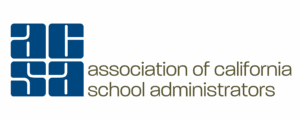
This resource is provided by ACSA Partner4Purpose Effective School Solutions.
In an ideal world, all school classrooms would run smoothly, and disciplinary measures would be unnecessary and obsolete. But in the real world, students are imperfect just like the rest of us, and occasions requiring disciplinary intervention are a regular fact of life. One form of disciplinary action is out-of-school suspension – also referred to as exclusionary discipline – in which a student isn’t allowed to attend school for a set period of time, often several days or weeks. While sometimes necessary, suspensions are often an imperfect response to a complicated situation.
In some cases, removing a student from school is the only course to take. When a student exhibits violent behavior or comes to school with a weapon, suspending the young person is appropriate for the safety of everyone involved. But suspensions are often given for a wide range of lesser infractions such as defiance and disobedience and even dressing inappropriately. Beginning in the 1970s, the number of suspensions began to rise at all grade levels, especially among certain groups, such as Black and disabled students. In recent years, many in education have questioned the value of relying too heavily on exclusionary practices, and increasingly schools have been looking for alternatives to suspension.
Suspensions Don’t Solve the Problem
If the purpose of a suspension is to promote more acceptable behavior in the future, then very often suspensions fall short. Research shows that suspensions generally don’t have a positive impact on future behaviors for middle school and high school students, nor do they serve as a deterrent for peers.
Many administrators themselves are aware that these interventions are ineffective. A 2021 survey of more than a thousand public school principals from across the country revealed that even principals who regularly imposed suspensions don’t believe they accomplish their stated goals: “A majority of principals (69%) agree or strongly agree suspensions and expulsions do not really solve discipline problems. Only 13% of principals feel they do, and the remaining 18% have mixed feelings.”
Despite their obvious skepticism, many of these same principals said they continued to suspend students. The authors of the study speculate that the reason for this finding may simply be that administrators fall back on traditional disciplinary measures because they lack the adequate staff and resources to implement more constructive measures.
Apart from their frequent failure to improve behavior, days away from school lead to lost learning, poorer academic performance and attendance and can even lead to increased school dropouts and involvement with the criminal justice system.
Many have also noted that suspensions are not meted out equally. There is data showing that students of color, especially Black students, are more frequently suspended than other groups, and students who have disabilities are removed from school at higher rates than their nondisabled peers.
What’s The Alternative?
Lacking other options but needing to do something, it’s understandable that principals continue to suspend students who act in disruptive ways. But simply removing a student by itself doesn’t address the underlying issues that gave rise to the behavioral incidents, and it doesn’t help students learn new and better strategies for handling difficult emotions and situations.
But if suspensions are ineffective, how can schools constructively respond to problematic behavioral issues? In recent years alternative disciplinary approaches have gained traction in schools across the country. Below are three that show promise.
Restorative Justice Practices
Often exclusionary measures serve as little more than punishment. Restorative justice practices follow a different model. According to the Learning Policy Institute, “restorative practices address school discipline by focusing on developing communication strategies and building relationships.” If suspension and expulsion are practices of exclusion, restorative approaches promote inclusion.
Some restorative activities, such as engaging in community-building circles, can serve as a foundation to establish a culture of belonging and cooperation that encourages open communication among students, teachers, and staff. When cooperation breaks down and the need for disciplinary measures arise, a “restorative conversation” can encourage the student to reflect on their action and its consequences in a way they would be unlikely to do on their own. Restorative conversations and subsequent reflection can foster accountability without being punitive, shaming, or blaming.
Another powerful restorative practice is restitution, which requires a student to take an action of some kind to repair a rupture or make amends. Acts of restitution work best when there is some connection between the reparative action and the original offense.
These and other practices require more time, effort, and engagement than suspension, but they can yield real rewards. One study that looked at data from 485 middle schools found that schools that incorporated the use of restorative justice practices saw improved student behavior and school safety. The inclusion of these practices led to increases in students’ academic achievement and reductions in suspension rates and duration. These effects were seen across all student populations but were most notable among Black and Latino/a students, suggesting that restorative practices may reduce racial disparities in discipline and academic achievement.
And a study of restorative practices in the Chicago Public Schools found “a staggering 35 percent reduction in student arrests in school and a 15 percent reduction in out-of-school student arrests. The study saw declines in arrests for both violent and non-violent offenses.”
Positive Behavioral Interventions and Supports
Positive Behavioral Interventions and Supports (PBIS) is a framework that promotes social, emotional, and behavioral (SEB) skills and well-being throughout the entire school community. Much like the multi-tiered system of support, the PBIS model provides for three levels of intervention.
The first tier is the broadest and applies to all members of the school community. Activities promote a shared vision for a positive, cooperative school culture. At this level, the community’s expectations and SEB skills are defined, shared, and taught to students. In doing so, the emphasis remains positive – focusing on what to do rather than what not to do.
The second tier focuses on the small segment of students who need additional positive behavior support. These strategies can include supplemental instruction and practice for behavioral, social, emotional, and academic skills and may include increased communication between the school and families.
For the few students who are most at-risk for acting out in disruptive ways, the third tier provides targeted intensive supports to improve their outcomes. These practices include intensive support through wraparound services and implementing individualized function-based support.
Like restorative practices, the PBIS framework emphasizes inclusion and belonging. Traditionally, PBIS has been implemented in elementary schools, and there is ample research suggesting that its adoption can promote prosocial behavior among children. In recent years PBIS has been implemented in middle and high schools, and there is new research suggesting that when schoolwide practices are carried out, disruptive behavior and discipline referrals are reduced.
In-School Suspension Programs
While out-of-school suspensions remove students from campus for a designated time, in-school suspensions allow students to continue going to school while being separated from their peers.
When administered well with adequate supports in place, in-school suspensions can be a positive and productive alternative for addressing behavioral issues – but they’re also easy to get wrong. Daniel Losen who directs the Center for Civil Rights Remedies at UCLA’s Civil Rights Project told EdSource: “The goal should be to get to the root of the problem and get kids back in class as soon as possible. What’s counterproductive is if kids are sent to sit in a room with someone who’s just there to babysit and they’re not getting any support.” Losen believes that done poorly, in-school suspensions can end up being even worse for students than traditional out-of-school suspensions.
The Hemet Unified School District in California adopted an in-school suspension program that seeks to avoid these mistakes. Students engaging in disruptive behavior are “assigned in-school suspensions or counseling sessions, where they are assessed individually and given a plan according to their needs. In addition, students get academic help and work on homework assignments.” The program is led by certified teachers and counselors who are equipped to meet students’ needs.
None of these approaches are panaceas, but they can make real, meaningful, measurable differences in young people’s lives and in the health of the school community. After it launched, Hemet’s in-school suspension program saw a major decrease in repeat in-school suspensions and a roughly 50% reduction of more serious out-of-school suspensions. A major win.
Putting Alternative Plans into Practice
Moving from traditional forms of disciplinary interventions to a more constructive approach takes more than simply flipping a switch. It requires planning, training, and buy-in from administrators and staff. Strategies like restorative justice and in-school suspensions can be successful, but as Jenny Escobar, a restorative justice coach at the California Conference for Equality and Justice, told EdSource, “to really reduce behavior problems on campus, schools need to take a broader approach to student well-being by addressing students’ social-emotional needs before behavior problems arise. . . . And it has to be not just for the kids who are causing trouble, but for everyone.”
Anjali Adukia, an assistant professor of public policy at the University of Chicago who conducted the research on restorative practices in Chicago schools cited above, told EdWeek, “You can’t just tell teachers to be restorative. … When [teachers] are new at this, it’s scary. Somebody just hit another kid and now you are doing a [restorative justice] circle; what if that goes really bad? They’re members of rival gangs. What on Earth are you supposed to do here?”
Across all these efforts, which can be employed individually or in tandem, adequate staff, training, and ongoing support are key to turning moments requiring disciplinary intervention into moments for positive change.
In 2022, Silvia Zircher, the superintendent of South River School District in New Jersey decided to do away with suspensions and implement a more positive approach to discipline. She wanted to reenforce feelings of community and belonging and discourage repeat offenses. As a result, the district replaced suspensions with community service hours in a program called Restorative Community Service.
The district partnered with ESS to set up and oversee the program, which includes both community service hours and guided reflection. Students meet with the ESS clinician to discuss their infraction and to prepare for their hours of service. Once the service has been completed (hours range from about two to ten, depending on the offense) students have another meeting with the clinician to talk about the experience: How did it feel? Who did they impact? Who did they help? How can they take this experience back into their life? In its early adoption, the program has been resoundingly successful, and there have been no repeat offenses.
Disciplinary measures may be a fact of life in our schools, but they can be reinvented in ways that take effort and commitment but can lead to better outcomes for students.


































